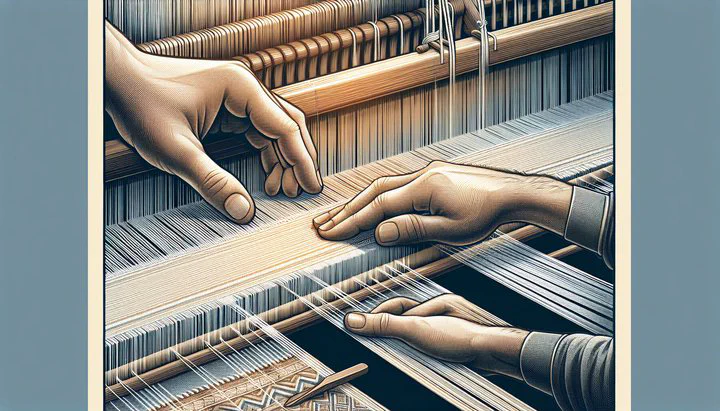Selvedge Tension Issues in Weaving

Understanding Selvedge Tension Issues
Have you ever noticed your weaving looking a bit uneven at the edges? This is often due to selvedge tension issues. These issues occur when the threads at the edges of your fabric, known as the selvedges, are tighter or looser than the rest. This can make your finished piece look uneven or cause it to pull in at the sides.
But why does this happen? One common reason is the draw in at the selvedges. Imagine pulling on the edges of a piece of paper—it narrows at the sides. Similarly, in weaving, the edges of your fabric can pull in more than the center, making it narrower. Tension at the selvedges is crucial because it affects how evenly your threads lay across the loom, impacting the overall appearance and strength of your project.
Selvedge tension problems can show up in different ways. You might see loops or gaps at the edges, or your threads might break more easily. These issues can be frustrating, especially when you’ve put a lot of effort into your project. But by understanding tension and how it affects your weaving, you can create neater, more durable pieces. Tackling these issues head-on will help improve your weaving skills and make the process more enjoyable.
Solutions for Selvedge Tension Problems
Dealing with selvedge tension issues in weaving can be tricky, but there are several effective solutions that can help. One method to try is weighting threads off the back beam. This involves adding small weights to the threads at the edges of your warp, which helps balance the tension more evenly across the loom. Think of it as adding weights to a seesaw to keep it balanced. This simple trick can make a big difference in how your finished piece looks.
Another important step is to adjust your loom’s tension settings. Make sure your loom is set up correctly, with even tension across all the threads. Sometimes, just a small adjustment can solve big problems. If you’re unsure how to do this, check your loom’s manual or ask for help from a more experienced weaver. Remember, experimenting with solutions is a normal part of the learning process, and with a little patience, you’ll get the hang of it.
If you still see problems after trying these solutions, consider cutting off the sample and retying the warp. This might sound drastic, but it can be a lifesaver when nothing else seems to work. By cutting off a small sample of your weaving and retying the warp, you can reset the tension and start fresh. This method gives you a clean slate to work with and can prevent further frustration down the line.
With these techniques, you can tackle selvedge tension issues head-on. Don’t forget to be patient with yourself as you practice and learn. Each project is a chance to improve your skills and create something beautiful. Keep experimenting with different solutions until you find what works best for you.
Preventing Selvedge Tension Issues
Preventing selvedge tension issues in weaving before they start can save you a lot of frustration. One of the best ways to do this is by setting up your loom correctly from the beginning. Here’s a simple setup checklist: ensure your loom is sturdy and all parts are working well, check that your warp threads are evenly spaced, and maintain consistent tension. Spending a little extra time on setup can make a big difference in your final piece.
Choosing the right yarn is also crucial for the prevention of selvedge tension issues. Different yarns behave differently, so it’s important to pick one that suits your project. For beginners, yarns that are smooth and strong are ideal as they are less likely to break or cause uneven tension. If you’re experimenting with a new type of yarn, try weaving a small sample first to see how it behaves on your loom.
Maintaining even tension throughout your weaving process is key. As you weave, keep an eye on the tension at the edges. If you notice any loose or tight threads, pause and adjust them right away. This can help prevent the draw in at the selvedges, where the edges of your fabric pull in more than the center. Regularly checking and adjusting can help you avoid bigger problems later.
Remember, practice makes perfect. The more you weave, the better you’ll get at managing tension. Don’t be afraid to try different techniques and see what works best for you. With time and patience, you’ll find that preventing selvedge tension issues becomes second nature. Enjoy the process, and happy weaving!
Engage with our crafting community by sharing your weaving experiences or seeking advice in online forums like “SewingWorld” or “Weaving” on Reddit. We’re excited to see how you tackle and overcome your weaving challenges. Don’t forget to share your progress or questions in the comments below. Happy crafting!